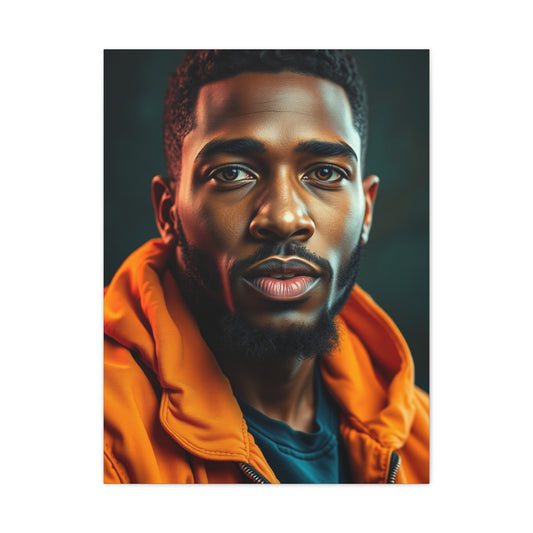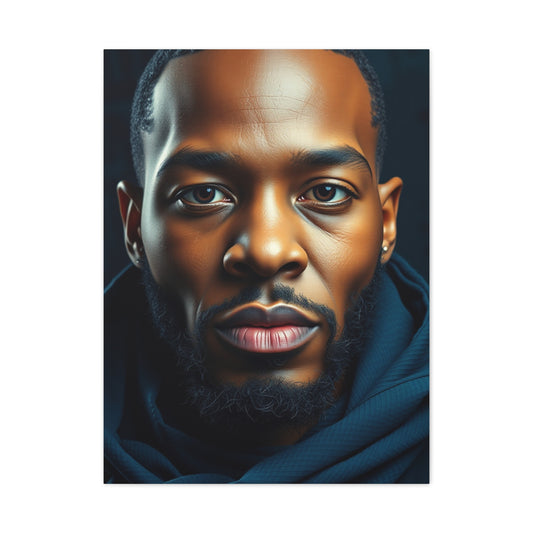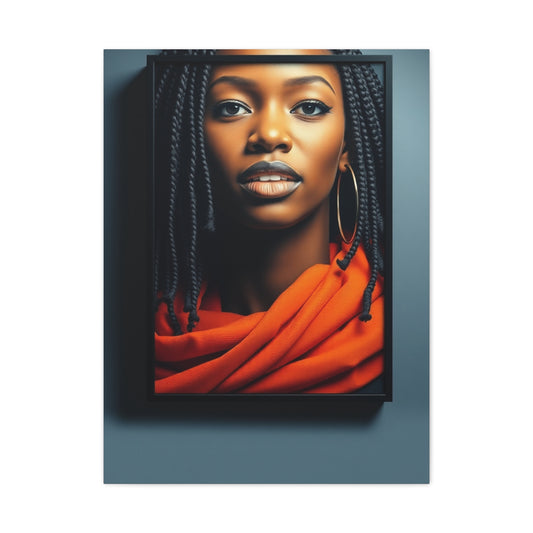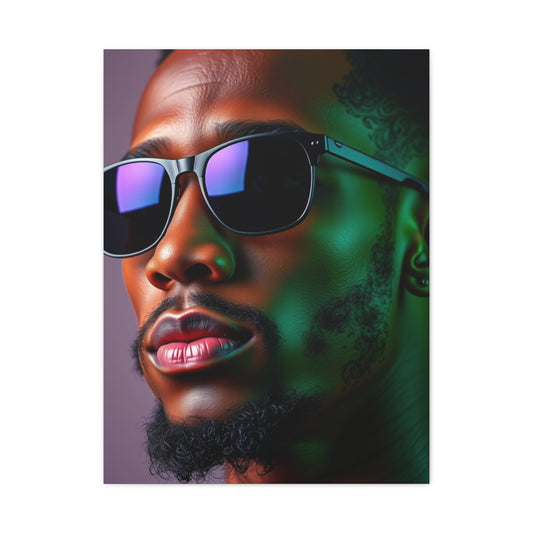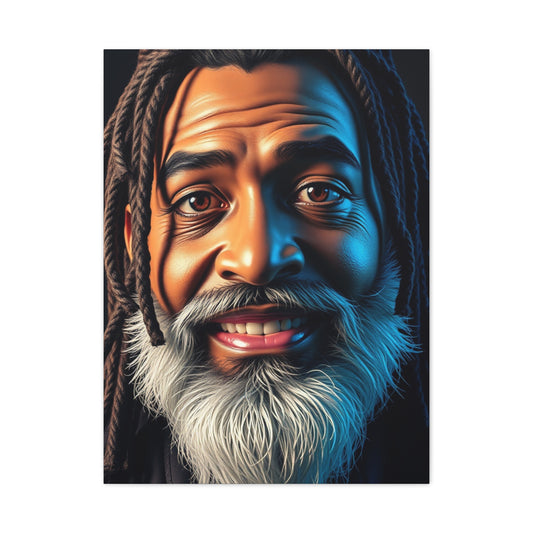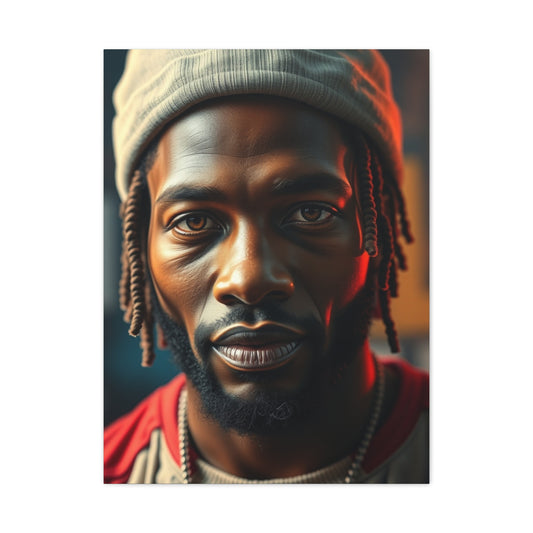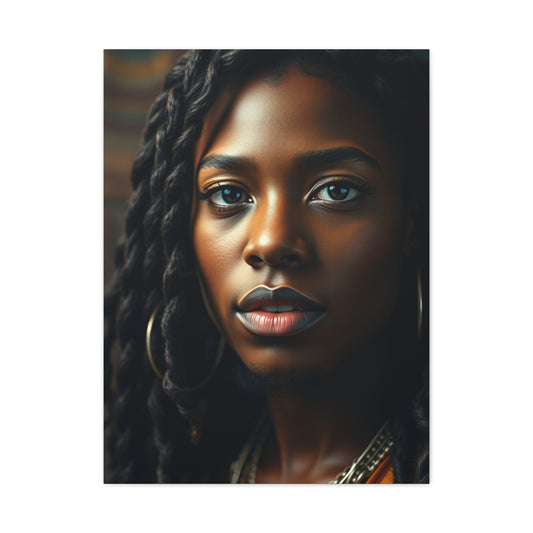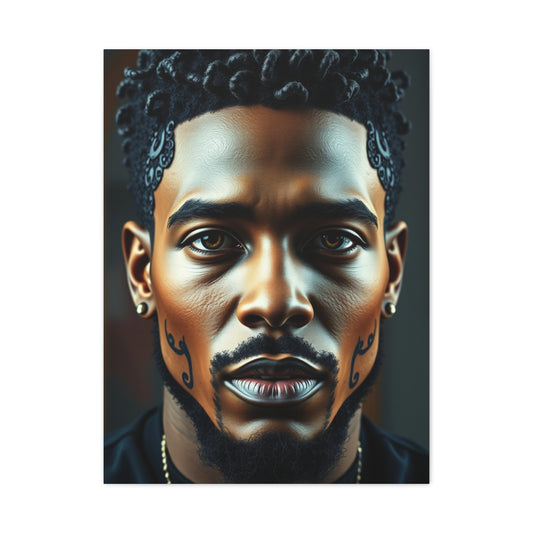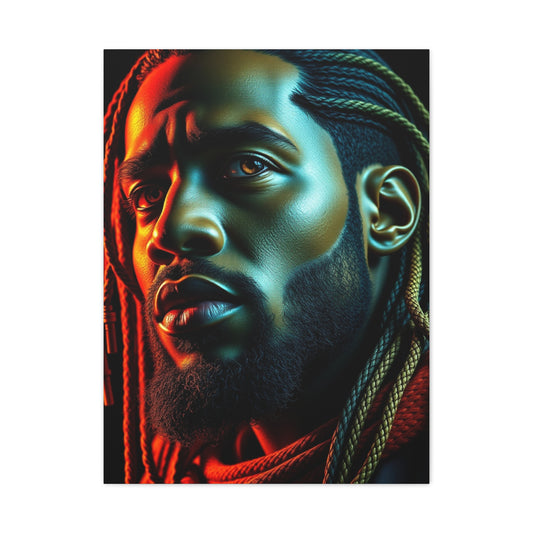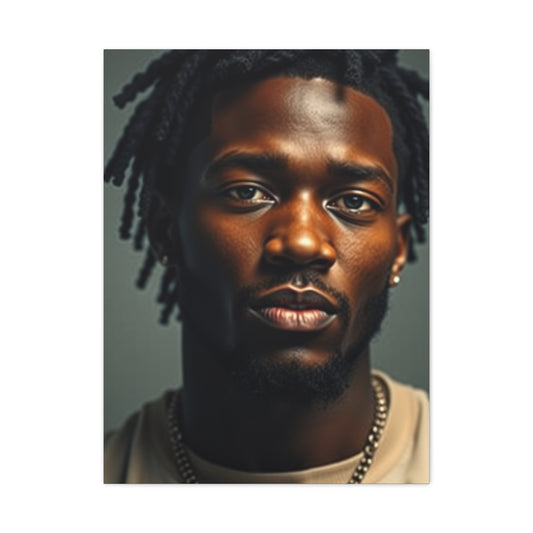The Artistic Vision of Hayden Williams: Bringing Fashion to Wall Art
Contemporary interior design has witnessed an unprecedented revolution with the emergence of fashion-inspired wall art, particularly through the visionary work of Hayden Williams. This remarkable artist has redefined the boundaries between haute couture and home decoration, creating an entirely new paradigm where fashion illustrations transcend their traditional confines to become sophisticated decorative elements that transform living spaces into galleries of style and elegance.
The intersection of fashion and interior design has never been more pronounced than in Williams' extraordinary body of work. His creations represent far more than mere decorative pieces; they embody a philosophy that views living spaces as extensions of personal style, where every wall becomes a canvas for expressing individual aesthetic preferences and cultural sophistication. Through his distinctive approach to fashion illustration, Williams has developed a unique visual language that speaks directly to design enthusiasts, fashion aficionados, and anyone seeking to infuse their environment with contemporary elegance and refined taste.
The significance of Williams' contribution to the decorative arts cannot be overstated. His work represents a fundamental shift in how we conceptualize the relationship between fashion and interior spaces, demonstrating that clothing design and home decoration are not separate entities but complementary aspects of a unified aesthetic vision. This revolutionary approach has opened new possibilities for homeowners, interior designers, and art collectors alike, providing them with unprecedented opportunities to create spaces that reflect the dynamism and creativity of contemporary fashion culture.
Understanding the Artistic Vision Behind Hayden Williams' Distinctive Style
Hayden Williams' artistic approach represents a sophisticated synthesis of classical illustration principles and contemporary design sensibilities. His work demonstrates an exceptional understanding of proportion, color theory, and compositional dynamics that elevates fashion illustration from commercial art to fine art suitable for prestigious interior environments. Each piece in his collection reflects meticulous attention to detail, from the precise rendering of fabric textures to the subtle interplay of light and shadow that gives his figures their distinctive three-dimensional quality.
The artist's mastery of line work stands as one of his most recognizable characteristics. Williams employs a distinctive linear approach that combines the precision of technical drawing with the expressive freedom of fine art illustration. His lines possess a remarkable quality of movement and energy, creating figures that appear to be captured in moments of elegant motion rather than static poses. This dynamic quality makes his work particularly effective as wall decoration, as the pieces seem to bring life and movement to otherwise static interior spaces.
Color plays an equally crucial role in Williams' artistic vocabulary. His palette choices demonstrate sophisticated understanding of color relationships and their psychological impact on viewers. Rather than relying on predictable combinations, Williams often employs unexpected color harmonies that create visual tension and interest while maintaining overall aesthetic coherence. This approach to color makes his work particularly versatile for interior design applications, as pieces can serve as either harmonious complements to existing color schemes or dynamic focal points that energize entire rooms.
The compositional structure of Williams' work reveals deep understanding of visual hierarchy and spatial relationships. His figures are positioned within their pictorial spaces with careful consideration of negative space, creating compositions that feel both complete and open-ended. This quality allows his pieces to integrate seamlessly into various interior contexts while maintaining their individual artistic integrity and visual impact.
The Evolution of Fashion-Inspired Interior Decoration Through Williams' Influence
The emergence of fashion-inspired interior decoration represents one of the most significant trends in contemporary design, and Hayden Williams' work has been instrumental in defining and popularizing this movement. His illustrations have demonstrated that fashion art can serve as legitimate decoration, equal in sophistication and artistic merit to traditional forms of wall art such as landscape paintings or abstract compositions.
This evolution reflects broader cultural shifts in how we understand the relationship between fashion and lifestyle. Contemporary consumers increasingly view fashion not merely as clothing but as a comprehensive aesthetic philosophy that extends to all aspects of their personal environment. Williams' work provides a perfect vehicle for this expanded understanding of fashion's role in personal expression, offering pieces that allow individuals to incorporate fashion sensibilities into their living spaces even when they are not actively engaged in dressing or styling themselves.
The influence of Williams' approach extends beyond individual collectors to professional interior designers and commercial spaces. Hotels, boutiques, restaurants, and other hospitality venues have recognized the power of fashion-inspired art to create distinctive atmospheres that appeal to style-conscious clientele. Williams' pieces offer these establishments the opportunity to communicate sophistication and contemporary relevance while avoiding the potentially overwhelming presence of actual fashion displays or merchandise.
The democratization of fashion art through Williams' work has also opened new possibilities for individuals who may not have extensive fashion budgets but still wish to incorporate fashion aesthetics into their personal spaces. His prints and reproductions make high-quality fashion-inspired decoration accessible to a broad audience, allowing anyone to create interiors that reflect fashion industry sophistication regardless of their clothing budget or access to designer pieces.
Design Integration Principles for Fashion-Inspired Wall Decoration
Successfully incorporating fashion-inspired wall art into interior spaces requires understanding of fundamental design principles that govern visual relationships and spatial harmony. Williams' work, while inherently striking, achieves its greatest impact when thoughtfully integrated into cohesive design schemes that enhance both the artwork and the surrounding environment.
Scale relationships represent perhaps the most critical consideration when selecting and positioning fashion-inspired wall pieces. Williams' work often features figures rendered at various scales, from intimate portrait-style compositions to dramatic full-length illustrations. Understanding how these different scales interact with room proportions, furniture arrangements, and architectural features determines the success of the overall design scheme. Larger pieces naturally serve as focal points and require sufficient wall space and appropriate viewing distances to be fully appreciated, while smaller works can be grouped to create gallery-style arrangements that build visual interest through repetition and variation.
Color coordination between artwork and interior elements requires sophisticated understanding of both harmony and contrast principles. While it might seem logical to match artwork colors exactly to existing interior palettes, this approach often results in compositions that lack visual energy and interest. Instead, Williams' work achieves greatest impact when it introduces controlled color tensions that enliven spaces without overwhelming them. This might involve selecting pieces that echo existing colors in different intensities or introducing complementary colors that create dynamic visual relationships.
Lighting considerations play crucial roles in maximizing the impact of fashion-inspired wall decoration. Williams' work, with its emphasis on line quality and color relationships, requires appropriate illumination to reveal its full artistic sophistication. Natural light can enhance the vibrancy of colors and the clarity of line work, but must be controlled to prevent fading or glare that might obscure important details. Artificial lighting systems should be designed to provide even illumination that enhances rather than competes with the artwork's inherent visual qualities.
The relationship between artwork and furniture arrangements requires careful planning to ensure that pieces complement rather than compete with each other. Williams' dynamic figures and compositional energy can enhance furniture groupings by providing visual anchors that unify disparate elements, but they can also overwhelm spaces if not properly scaled and positioned. Understanding sight lines, traffic patterns, and functional requirements ensures that fashion-inspired artwork enhances rather than impedes the practical use of interior spaces.
Room-by-Room Applications of Hayden Williams Fashion-Inspired Decoration
The versatility of Williams' fashion-inspired artwork makes it suitable for virtually any interior space, though different room types present unique opportunities and challenges for integration. Understanding how to adapt Williams' work to specific functional and aesthetic requirements of different rooms maximizes both the artwork's impact and the room's overall design success.
Living rooms and family spaces offer perhaps the greatest opportunities for dramatic fashion-inspired decoration. These areas typically feature the largest wall spaces and serve as primary venues for entertaining and relaxation, making them ideal locations for Williams' more substantial pieces. The social nature of these spaces aligns perfectly with fashion's inherently social and communicative qualities, creating environments where artwork serves as conversation starters and expressions of personal style. Large-scale Williams pieces can anchor seating arrangements, provide visual weight to balance architectural features, or create gallery-style focal points that elevate the entire space's aesthetic sophistication.
Bedroom environments present unique opportunities for more intimate and personal fashion-inspired decoration. Williams' work can transform bedrooms into private retreats that reflect individual style preferences and aesthetic aspirations. The private nature of bedroom spaces allows for more personal and potentially bold artistic choices, as these rooms serve primarily their occupants rather than guests or visitors. Smaller Williams pieces can create sophisticated vignettes above headboards or dressing tables, while larger works can serve as dramatic focal points that transform sleeping spaces into style sanctuaries.
Dining rooms benefit enormously from fashion-inspired artwork that enhances the social and ceremonial aspects of shared meals. Williams' elegant figures and sophisticated color palettes create atmospheres of refinement and celebration that elevate dining experiences beyond mere sustenance to cultural and aesthetic events. The formal nature of many dining spaces aligns perfectly with fashion's emphasis on presentation and visual sophistication, creating opportunities for artwork selections that might be too formal or dramatic for more casual living areas.
Home offices and study spaces present interesting opportunities for fashion-inspired decoration that can enhance creativity and productivity while maintaining professional appropriateness. Williams' work can provide visual inspiration and aesthetic stimulation that energizes work environments without creating distractions or appearing unprofessional. The sophisticated nature of his illustrations makes them suitable for spaces where business entertaining or client meetings might occur, while their creative energy can provide inspiration for various professional endeavors.
Bathroom and powder room spaces, though often overlooked for serious artwork consideration, can be transformed through carefully selected fashion-inspired pieces. These intimate spaces offer opportunities for playful or dramatic artistic statements that might be overwhelming in larger rooms. Williams' work can turn utilitarian spaces into sophisticated retreats that extend the home's overall design aesthetic into every corner of the living environment.
Fashion-Inspired Interior Design
The sophisticated use of color in Williams' fashion illustrations provides exceptional opportunities for interior designers and homeowners to create cohesive and visually compelling color schemes throughout their living spaces. Understanding how to leverage the color relationships inherent in his work can transform ordinary rooms into sophisticated environments that demonstrate advanced understanding of color theory and its psychological impacts.
Williams' mastery of color relationships extends far beyond simple aesthetic preferences to encompass deep understanding of how different colors interact with each other and with human psychology. His work frequently employs unexpected color combinations that create visual tension and interest while maintaining overall harmony and sophistication. These same principles can be applied to interior design schemes that use Williams' artwork as inspiration for comprehensive color planning that extends from wall colors to furniture selection to accessory choices.
The psychological impact of color in interior environments cannot be underestimated, and Williams' work provides excellent guidance for creating spaces that support desired emotional and functional outcomes. His use of warm colors creates inviting and energetic environments suitable for social spaces and active areas, while his cooler palettes promote calm and contemplation appropriate for private retreats and relaxation areas. Understanding these relationships allows for strategic color selection that enhances both the artwork's impact and the space's functional success.
Seasonal color variations represent another sophisticated approach to interior design that Williams' diverse palette makes possible. His work spans the full spectrum of color relationships, from warm autumn tones to cool winter palettes to fresh spring combinations to vibrant summer intensities. This diversity allows for seasonal decoration schemes that keep interior spaces fresh and current while maintaining underlying aesthetic coherence through the consistent quality and style of Williams' artistic vision.
The interaction between natural and artificial light sources and color perception requires careful consideration when planning color schemes inspired by Williams' work. Colors that appear vibrant and sophisticated under gallery lighting conditions may appear quite different under various home lighting scenarios. Testing color relationships under actual living conditions ensures that the sophisticated color harmonies present in Williams' original work translate successfully to real-world interior environments.
Framing Considerations for Maximum Impact
The presentation of Williams' fashion-inspired artwork requires careful attention to material selection and framing choices that enhance rather than detract from the artwork's inherent qualities. These decisions significantly impact both the artwork's visual impact and its integration into existing interior design schemes, making them crucial considerations for anyone seeking to maximize their investment in fashion-inspired decoration.
Print quality represents the foundation of successful fashion-inspired decoration, as the sophisticated line work and color relationships in Williams' original illustrations require reproduction methods capable of maintaining artistic integrity and visual impact. High-resolution digital printing on archival papers provides the clarity and color accuracy necessary to preserve the subtleties of Williams' artistic technique, while inferior reproduction methods can compromise the artwork's sophistication and professional appearance.
Paper selection influences both the artwork's visual qualities and its longevity in interior environments. Museum-quality papers provide superior color reproduction and resistance to fading, ensuring that Williams' carefully crafted color relationships remain stable over time. Different paper textures can also enhance specific qualities of the artwork, with smooth papers emphasizing the precision of line work while textured papers can add subtle visual interest that complements the artwork's overall aesthetic sophistication.
Frame selection requires balancing multiple considerations including the artwork's inherent style, the interior environment's existing aesthetic, and practical concerns such as protection and maintenance. Williams' work generally benefits from framing approaches that enhance rather than compete with the artwork's visual sophistication. Clean, contemporary frames often provide the most effective presentation, allowing the artwork to serve as the primary visual focus while providing appropriate protection and professional presentation.
Matting decisions can significantly impact the artwork's visual presence and its relationship to surrounding interior elements. Proper matting provides visual breathing space around the artwork while protecting it from direct contact with glazing materials. Color choices for matting materials should complement the artwork's palette without overwhelming it, often working best when they echo colors present in the surrounding interior environment rather than the artwork itself.
Glazing selection involves balancing protection requirements with visual clarity and reflection control. Museum-quality glazing materials provide superior protection from ultraviolet light and environmental contaminants while minimizing reflections that can interfere with artwork viewing. Anti-reflective coatings ensure that Williams' sophisticated line work and color relationships remain clearly visible under various lighting conditions and viewing angles.
Creating Gallery-Style Arrangements and Collections
The development of comprehensive collections of Williams' fashion-inspired artwork opens possibilities for creating sophisticated gallery-style arrangements that transform residential spaces into curated environments rivaling professional art installations. Understanding principles of collection development and display arrangement enables both serious collectors and casual enthusiasts to create visually compelling and aesthetically coherent presentations.
Collection coherence requires strategic selection of pieces that complement each other while maintaining individual artistic integrity and visual interest. Williams' diverse body of work provides numerous approaches to collection development, from thematic groupings focused on specific fashion categories or color palettes to chronological arrangements that demonstrate artistic evolution to eclectic selections that emphasize variety and visual contrast. Successful collections balance unity and diversity, creating overall coherence while providing sufficient variation to maintain viewer interest and prevent visual monotony.
Spatial arrangement principles govern how individual pieces within collections relate to each other and to their surrounding environments. Gallery-style arrangements require careful consideration of sight lines, visual weight distribution, and compositional relationships between multiple artworks. The goal is creating unified presentations where individual pieces enhance each other while maintaining their own artistic identity and visual impact.
Grouping strategies can emphasize different qualities of Williams' work and create various aesthetic effects. Symmetrical arrangements provide formal and classical presentations suitable for traditional interior environments, while asymmetrical groupings create more dynamic and contemporary effects appropriate for modern spaces. Grid arrangements emphasize the graphic qualities of Williams' illustrations, while organic groupings highlight their expressive and artistic characteristics.
Scale relationships within collections require careful planning to ensure visual harmony and appropriate emphasis. Mixing different sizes of Williams' work can create dynamic and visually interesting arrangements, but requires understanding of how different scales interact and influence viewer attention. Larger pieces naturally serve as focal points and anchors for arrangements, while smaller works can provide supporting visual elements that build complexity and interest.
Lighting design for collections requires comprehensive planning that ensures even illumination while preventing glare and unwanted reflections. Track lighting systems provide flexibility for highlighting individual pieces within larger arrangements, while ambient lighting ensures that collections integrate successfully with their surrounding environments. The goal is creating lighting that enhances the artwork's visual qualities while supporting the practical use of the surrounding space.
Seasonal Decoration Strategies Using Fashion-Inspired Artwork
The dynamic nature of fashion and its inherent connection to seasonal change provides unique opportunities for creating interior decoration schemes that remain fresh and current throughout the year. Williams' diverse portfolio includes work suitable for various seasonal approaches, allowing sophisticated homeowners to maintain visual interest and contemporary relevance through strategic rotation and seasonal emphasis.
Spring decoration strategies emphasize renewal, growth, and optimistic energy that Williams captures through his use of fresh color palettes and dynamic compositional arrangements. His work featuring lighter colors, flowing lines, and energetic poses perfectly complements spring's themes of renewal and awakening. These pieces can replace heavier winter selections to create interior environments that reflect seasonal change while maintaining year-round sophistication and style.
Summer approaches benefit from Williams' work that emphasizes vibrant colors, bold contrasts, and celebratory themes that align with summer's social and recreational focus. His illustrations featuring bright palettes and confident poses create interior environments that support summer's emphasis on entertainment, relaxation, and social interaction. These selections can transform living spaces into venues that feel appropriate for summer gatherings while maintaining the sophisticated aesthetic that Williams' work consistently provides.
Autumn decoration strategies can emphasize the sophisticated color palettes and refined compositions that Williams often employs in his more formal and elegant work. Rich colors, complex compositional arrangements, and sophisticated styling align perfectly with autumn's themes of maturity, harvest, and preparation. These pieces create interior environments that feel grounded and substantial while maintaining the dynamic energy that characterizes Williams' artistic approach.
Winter selections might emphasize Williams' work featuring cooler palettes, more contemplative poses, and sophisticated styling that aligns with winter's more introspective and refined character. These pieces create interior environments that feel appropriate for winter's emphasis on indoor living, intimate gatherings, and reflective activities while maintaining the visual interest and aesthetic sophistication that prevents winter interior schemes from becoming boring or depressing.
Transition strategies between seasons require planning that allows for smooth changes without completely disrupting established interior design schemes. This might involve maintaining certain key pieces year-round while rotating supporting elements, or creating flexible arrangement systems that allow for easy reconfiguration as seasonal preferences change. The goal is maintaining visual freshness while preserving underlying aesthetic coherence and investment in quality artwork.
Professional Interior Design Integration and Consultation
The incorporation of Williams' fashion-inspired artwork into professional interior design projects requires understanding of both artistic and design principles that govern successful integration of artwork into comprehensive interior schemes. Professional designers increasingly recognize fashion-inspired decoration as a legitimate and sophisticated approach to contemporary interior design that can serve diverse client needs and aesthetic preferences.
Client consultation processes for fashion-inspired interior projects require understanding of both fashion aesthetics and interior design principles to ensure successful outcomes that satisfy client objectives while maintaining professional standards. This involves assessing client lifestyle requirements, aesthetic preferences, functional needs, and budget constraints to develop artwork selections and integration strategies that enhance overall project success.
Design development processes must balance artistic considerations with practical requirements such as building codes, maintenance concerns, and functional limitations. Williams' artwork must be integrated into comprehensive design schemes that address lighting, furniture selection, color coordination, and spatial planning while ensuring that the artwork enhances rather than competes with other design elements.
Budget planning for fashion-inspired decoration requires understanding of artwork costs, framing expenses, installation requirements, and ongoing maintenance needs to develop realistic project budgets that allow for successful completion without compromising quality or design integrity. Professional designers must educate clients about the long-term value of quality artwork and appropriate presentation methods to justify investment levels required for successful fashion-inspired decoration.
Installation coordination involves managing relationships between multiple trades and suppliers to ensure that artwork installation integrates smoothly with other construction and decoration activities. This requires understanding of timing requirements, access needs, and technical specifications to prevent damage to artwork or interference with other project components.
Maintenance and conservation planning ensures that fashion-inspired artwork installations remain in optimal condition throughout their useful life. This involves developing maintenance schedules, establishing relationships with qualified conservators, and educating clients about proper care and handling procedures to protect their artwork investments.
Cultural and Historical Context of Fashion-Inspired Interior Design
Understanding the cultural and historical foundations of fashion-inspired interior design provides essential context for appreciating Williams' contribution to this evolving field. The relationship between fashion and interior decoration has deep historical roots that extend far beyond contemporary trends to encompass fundamental human desires for beauty, self-expression, and cultural participation.
Historical precedents for fashion-inspired decoration can be traced through various periods and cultures, from the elaborate textile decorations of medieval castles to the fashion-influenced interior schemes of 18th-century French aristocracy to the Art Deco movement's incorporation of fashion aesthetics into architectural and decorative design. These historical examples demonstrate that the integration of fashion sensibilities into interior environments represents a consistent human impulse rather than a temporary trend.
The democratization of fashion through mass media, photography, and digital communication has fundamentally changed how fashion influences interior design. Williams' work exists within this contemporary context where fashion imagery is readily accessible and widely appreciated, creating new possibilities for fashion-inspired decoration that were inconceivable in earlier periods when fashion imagery was limited to elite circles and professional contexts.
Cultural significance of fashion-inspired decoration extends beyond mere aesthetic preference to encompass broader social and economic trends that emphasize personal branding, lifestyle marketing, and the integration of consumer culture into domestic environments. Williams' work provides vehicles for participating in these cultural trends while maintaining artistic sophistication and aesthetic integrity that elevates fashion-inspired decoration above mere consumerism.
Global influences on fashion-inspired interior design reflect the international nature of contemporary fashion culture and the cross-cultural exchange of aesthetic ideas and preferences. Williams' work, while rooted in Western fashion traditions, demonstrates universal appeal that transcends cultural boundaries and creates opportunities for fashion-inspired decoration that resonates with diverse audiences and cultural contexts.
The economic impact of fashion-inspired interior design represents a significant market segment that supports artists, designers, manufacturers, retailers, and service providers throughout the home decoration supply chain. Williams' success demonstrates the viability of fashion-inspired decoration as both artistic pursuit and commercial enterprise, creating economic opportunities while satisfying consumer demand for sophisticated and contemporary interior design solutions.
Digital Age Considerations and Online Presentation
The digital revolution has fundamentally transformed how fashion-inspired artwork is created, distributed, marketed, and integrated into interior design projects. Williams' success reflects his ability to leverage digital platforms and technologies to reach broader audiences while maintaining the artistic integrity and visual sophistication that characterize his work.
Online presentation of fashion-inspired artwork requires understanding of digital color management, screen calibration, and reproduction limitations to ensure that artwork appears accurately across various digital platforms and devices. Williams' work must be presented in ways that faithfully represent its artistic qualities while accommodating the technical limitations and variations inherent in digital display systems.
E-commerce considerations for fashion-inspired artwork involve developing systems for online sales that provide customers with sufficient information and visual representation to make informed purchasing decisions. This includes providing multiple views, detailed specifications, color accuracy information, and size references that help customers understand how artwork will appear in their specific interior environments.
Social media integration has become crucial for fashion-inspired artists and interior designers seeking to reach contemporary audiences and build professional reputations. Williams' work lends itself particularly well to social media presentation, where its visual appeal and fashion connection generate engagement and sharing that extends market reach beyond traditional art and design channels.
Virtual and augmented reality technologies offer new possibilities for previewing fashion-inspired artwork in specific interior environments before making purchasing or installation decisions. These technologies can help customers visualize how Williams' work will appear in their spaces while allowing for experimentation with different arrangements, scales, and combinations before committing to specific selections.
Digital archival and collection management systems enable serious collectors to maintain comprehensive records of their fashion-inspired artwork collections while facilitating insurance, conservation, and estate planning activities. These systems can track provenance, condition, valuation, and location information while providing visual documentation that supports various collection management needs.
Investment and Collectability Aspects of Fashion-Inspired Artwork
The growing recognition of fashion-inspired artwork as a legitimate collectible category has created new opportunities for art investment and collection development that extend beyond traditional fine art categories. Williams' work demonstrates the potential for fashion illustration to appreciate in value while providing aesthetic enjoyment and interior design benefits throughout ownership periods.
Market analysis for fashion-inspired artwork requires understanding of factors that influence value and collectibility, including artist reputation, artwork rarity, condition, provenance, and market demand trends. Williams' established reputation and growing recognition contribute to the investment potential of his work while providing collectors with reasonable confidence in long-term value preservation and potential appreciation.
Authentication and provenance documentation become increasingly important as the market for fashion-inspired artwork develops and values increase. Collectors must maintain proper documentation that establishes artwork authenticity, ownership history, and condition to protect their investments and facilitate future sales or transfers.
Insurance considerations for fashion-inspired artwork collections require understanding of coverage options, valuation methods, and risk management strategies that protect collectors from loss while providing reasonable premium costs. This includes regular appraisals, proper storage and display conditions, and security measures that minimize risk while allowing for artwork enjoyment and appreciation.
Estate planning for fashion-inspired artwork collections requires consideration of valuation, tax implications, and transfer strategies that protect collector interests while providing for artwork disposition according to personal preferences and family needs. This might involve charitable donations, family transfers, or sales that maximize value while minimizing tax consequences.
Collection management systems for serious collectors provide organization, documentation, and planning tools that enhance collection enjoyment while protecting investment values. These systems can track acquisition information, condition reports, insurance values, and location data while providing visual documentation that supports various collection management needs.
Global Trends
The international appeal of Williams' fashion-inspired artwork reflects broader globalization trends that have created worldwide appreciation for fashion culture and its aesthetic expressions. Understanding these global market dynamics provides insight into the continuing growth and evolution of fashion-inspired interior design as an international phenomenon.
Regional preferences for fashion-inspired decoration vary according to cultural traditions, economic conditions, and aesthetic preferences that influence how Williams' work is received and integrated into different international markets. European markets often emphasize sophisticated color palettes and classical compositional approaches, while Asian markets may prefer bold graphics and contemporary styling that reflects rapidly evolving urban cultures.
Cross-cultural adaptation of fashion-inspired artwork requires sensitivity to local aesthetic preferences and cultural values while maintaining the artistic integrity that makes Williams' work distinctive and valuable. This might involve selecting pieces that resonate with local color preferences or cultural themes while avoiding imagery or styling that might be considered inappropriate or insensitive in specific cultural contexts.
International distribution and shipping considerations for fashion-inspired artwork involve understanding customs regulations, import duties, and shipping methods that ensure safe delivery while minimizing costs and delays. These logistical considerations become increasingly important as global demand for Williams' work expands beyond his primary markets.
Currency fluctuations and international economic conditions influence the accessibility and affordability of fashion-inspired artwork in different global markets, creating opportunities and challenges for both artists and collectors as exchange rates and economic conditions change over time.
Cultural exchange facilitated through fashion-inspired artwork creates opportunities for cross-cultural understanding and appreciation that extend beyond mere commercial relationships to encompass broader cultural and artistic dialogue. Williams' work serves as a vehicle for sharing aesthetic values and cultural perspectives that contribute to international understanding and cooperation.
Benefits of Fashion-Inspired Interior Design
The psychological impact of interior environments on human wellbeing has been extensively documented, and fashion-inspired artwork can contribute to positive psychological outcomes through its ability to create inspiring, sophisticated, and personally meaningful living spaces. Williams' work offers particular benefits through its combination of aesthetic sophistication and positive emotional associations with fashion and style.
Mood enhancement through carefully selected fashion-inspired artwork can transform interior environments from merely functional spaces into environments that actively support positive emotional states and psychological wellbeing. Williams' use of dynamic compositions and sophisticated color relationships creates visual experiences that can energize, inspire, and uplift occupants while providing ongoing aesthetic pleasure and satisfaction.
Self-expression opportunities provided by fashion-inspired decoration allow individuals to communicate personal values, aesthetic preferences, and cultural affiliations through their interior environments. Williams' diverse body of work provides options for various expression needs, from bold statements about style consciousness to subtle indications of aesthetic sophistication that reflect personal values and cultural participation.
Stress reduction benefits of attractive interior environments have been documented through various research studies, and fashion-inspired artwork can contribute to these benefits by providing visual interest and aesthetic pleasure that distract from daily stresses while creating environments that feel supportive and nurturing. Williams' sophisticated aesthetic provides these benefits while maintaining visual interest that prevents environments from becoming boring or unstimulating.
Social confidence enhancement through stylish interior environments can support personal and professional relationships by creating spaces that reflect positively on occupants while providing comfortable and attractive venues for social interaction. Williams' work creates interior environments that communicate style consciousness and aesthetic sophistication that can enhance social confidence and professional credibility.
Creative inspiration provided by visually stimulating interior environments can support various personal and professional activities that benefit from aesthetic stimulation and creative energy. Williams' work provides ongoing visual interest and inspiration that can support creative thinking and innovative problem-solving while maintaining the visual sophistication necessary for professional environments.
Fashion-Inspired Artwork
Proper maintenance and conservation of fashion-inspired artwork ensures that investments in Williams' work provide long-term value and aesthetic enjoyment while preserving artistic integrity and market value throughout ownership periods. Understanding appropriate care and handling procedures protects artwork while minimizing maintenance costs and conservation requirements.
Environmental control for fashion-inspired artwork involves maintaining appropriate temperature, humidity, and lighting conditions that prevent deterioration while allowing for normal enjoyment and display. This includes avoiding direct sunlight, excessive heat, high humidity, and rapid environmental changes that can cause fading, warping, or other damage to artwork and framing materials.
Cleaning and maintenance procedures for framed fashion-inspired artwork require understanding of appropriate methods and materials that remove dust and environmental contaminants without damaging artwork or framing components. Regular gentle cleaning prevents accumulation of harmful substances while maintaining attractive appearance and optimal viewing conditions.
Handling guidelines for fashion-inspired artwork ensure that movement, installation, and adjustment activities are conducted safely without risk of damage to artwork or injury to handlers. This includes using appropriate lifting and carrying methods, protecting artwork during transportation, and employing proper installation hardware and methods that provide secure mounting while preventing damage.
Conservation assessment and treatment planning involves regular evaluation of artwork condition and identification of potential conservation needs before they develop into serious problems requiring expensive treatment. Early intervention prevents minor issues from becoming major conservation challenges while preserving artwork value and appearance throughout ownership periods.
Professional conservation services for fashion-inspired artwork provide specialized expertise for addressing conservation needs that exceed owner capabilities or comfort levels. Understanding when to seek professional assistance and how to select qualified conservators protects artwork investments while ensuring that conservation work maintains professional standards and preserves market value.
Conclusion
The transformative power of Hayden Williams' fashion-inspired wall art represents far more than a passing trend in contemporary interior design. It embodies a fundamental shift in how we understand the relationship between personal style, living spaces, and artistic expression. Through his masterful integration of fashion illustration with decorative art principles, Williams has created a new paradigm that allows individuals to transform their homes into sophisticated galleries that reflect their aesthetic sensibilities and cultural awareness.
The comprehensive exploration of fashion-inspired interior decoration reveals its multifaceted nature as both artistic movement and practical design solution. Williams' work demonstrates that fashion illustration can achieve the same level of artistic sophistication and cultural significance as traditional fine art categories while providing unique benefits specific to its fashion connections. This dual nature makes fashion-inspired decoration particularly valuable for contemporary consumers who seek both aesthetic pleasure and cultural relevance in their interior environments.
The practical applications of Williams' work across various room types and design contexts demonstrate remarkable versatility that makes fashion-inspired decoration suitable for diverse lifestyles and aesthetic preferences. From intimate bedroom retreats to sophisticated dining rooms to dynamic living spaces, Williams' artwork enhances rather than overwhelms existing interior elements while providing opportunities for personal expression and style communication that traditional decoration categories cannot match.
The technical considerations involved in successfully integrating fashion-inspired artwork into interior environments require sophisticated understanding of design principles, but the investment in quality presentation and appropriate integration yields long-term benefits that justify initial costs and planning efforts. Proper attention to framing, lighting, color coordination, and spatial relationships ensures that Williams' work achieves maximum impact while maintaining its artistic integrity and market value throughout extended ownership periods.
The cultural and historical context of fashion-inspired interior design reveals deep roots that extend far beyond contemporary trends to encompass fundamental human desires for beauty, self-expression, and cultural participation. Williams' work exists within this broader context while contributing to its continued evolution and development through innovative approaches to artistic creation and market development that benefit artists, collectors, and design professionals alike.
The global appeal of Williams' fashion-inspired artwork reflects broader cultural trends toward internationalization and cross-cultural aesthetic exchange that create new opportunities for artistic appreciation and market development. Understanding these global dynamics provides insight into the continuing growth potential for fashion-inspired decoration as both artistic movement and commercial enterprise that supports diverse participants throughout its value chain.
The therapeutic and psychological benefits of fashion-inspired interior environments represent important additional value that extends beyond aesthetic and investment considerations to encompass human wellbeing and quality of life improvements. Williams' work contributes to positive psychological outcomes through its ability to create inspiring, sophisticated, and personally meaningful living spaces that support various aspects of human flourishing and social interaction.
The sustainability and environmental considerations associated with fashion-inspired artwork require ongoing attention and innovation to ensure that aesthetic benefits do not come at unacceptable environmental costs. Developing sustainable practices throughout the creation, distribution, and presentation process ensures that fashion-inspired decoration remains viable and responsible for future generations while maintaining its essential aesthetic and cultural functions.

